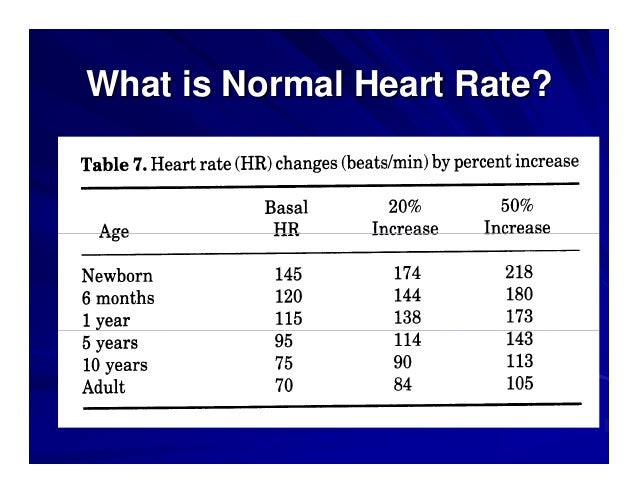This is a delicate matter, you should not jump to the conclusion of heart disease if these are the only two symptoms. If the child is running a fever this can affect the heart. I ve also had an EKG before, and I was told that. That is a totally normal, ok, and healthy blood pressure and heart rate!
Body temperature does not change with age. What is normal oxygen saturation in pediatrics? However, body temperature may fluctuate depending upon the time of day, and a normal temperature may range between 97. A rectal temperature of 100.
F (3 C ) is considered a fever. Handbook of Emergency Cardiovascular Care for Healthcare Providers. Fleming S, Thompson M, Stevens R, Heneghan C, Pluddemann A, Maconochie I, Tarassenko L, Mant D. Many parents know that their own pulse or heart rate should be within about to 1beats per minute. Normal heart rate ranges differ by age. You may be surprised that your children will typically have a higher pulse rate.

Depending on their age, children can have a pulse between and 1beats per minute. Infants have a higher heart rate than children. The ‘normal’ average heart rate for children depends on their age group. Following are the average resting heart rates (pulse rates) for children of different age groups.
The normal heart rate for a child decreases as the child ages, according to MedlinePlus. Decisions of what is normal and what needs to be treated are based on these normal values. In pediatrics, the normal heart rate varies with age (see Table ). Therefore, in children, the definition of tachycardia is age dependent. Presentation varies with underlying cause, but most often the symptoms are vague and non-specific,. Set a timer for seconds and count the beats.

Double that number, and that’s your child’s heart rate. But a heart rate lower than doesn’t always mean you have a medical problem. Active people often have lower heart rates since their heart muscles do not need to work as hard to maintain a constant beat.
Bradycardia refers to a heart rate lower than the normal range for the age of the child. The heart rate will fall below bpm. For some children, a slower heart rate does not bring on any problem. However, bradycardia can also indicate issues with the heart’s electrical framework. Apply gentle pressure until you can feel a slight beat against your fingertips.
Count how many beats you feel in seconds. Development of heart and respiratory rate percentile curves for hospitalized children. If you feel your child has abnormal, higher or lower heart rate , please contact your pediatrician.
Pediatric vital signs include heart rate , breathing rate , blood pressure, and body temperature. Knowing these vital signs can help you notice any health concerns in your child. Using these normal values, both researchers and clinicians have a tool to decide upon cut-off values of HRV.
No comments:
Post a Comment
Note: only a member of this blog may post a comment.